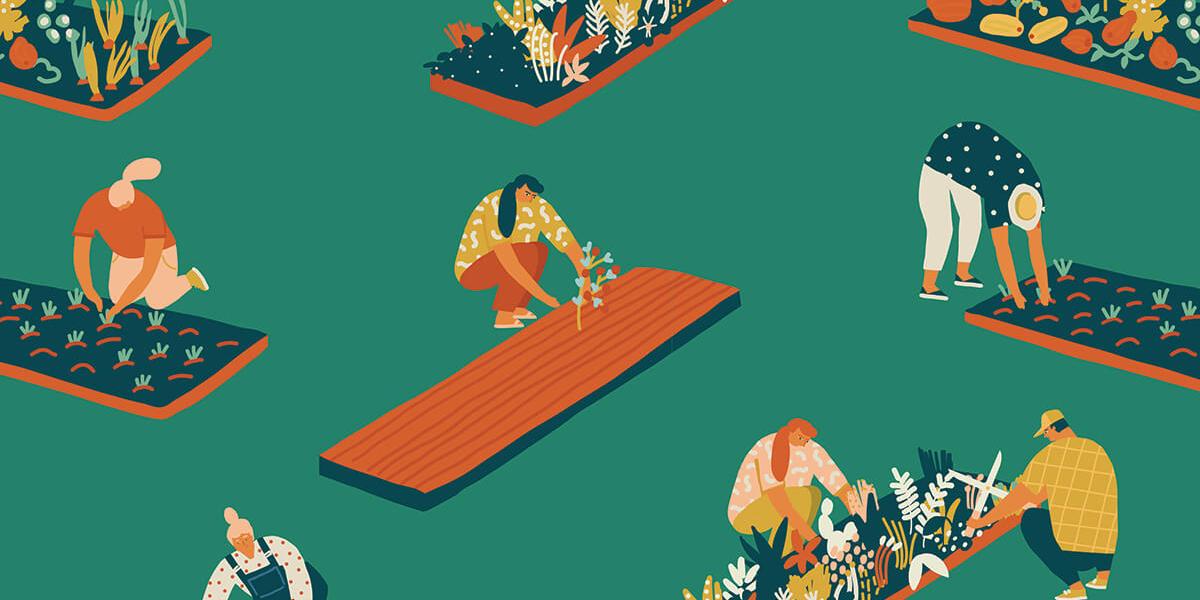Home & Living
Experts Share Their Tips for Creating the Perfect Community Garden
Those looking to put down roots at a neighborhood patch have plenty of options to choose from.
What draws people to community gardens? For some, it’s the sense of accomplishment and thrill that comes from harvesting their own fruits, flowers, and vegetables. For others, it’s the simple therapeutic pleasure of creating and caring for beautiful, outdoor spaces.
For Naomi Goldstick Rosner, it was the chance to meet neighbors that sparked her interest in carving out a vegetable garden in the backyard of her Mount Washington home about 10 years ago.
“I posted on Listserv that I had a lot of space in my yard, and if anybody wanted to do vegetable gardening with me, I’d be happy to,” says Goldstick Rosner, who, along with her husband, had recently moved to the Victorian-era neighborhood from Houston, Texas.
When more than 20 interested neighbors responded to her post, she sought the advice of Baltimore Green Space’s founder and then-director Miriam Avins, who advised Goldstick Rosner to contact Master Gardener Larry Kloze. It didn’t go to plan.
“He looked at my plot and said, ‘It’s too small, and it doesn’t get enough sun. You need to go find more land,’” she recalls with a laugh—so she found it in Mount Washington’s Northwest Park. In 2011, the 4.9- acre parcel became home to the Eric Waller Community Vegetable Garden, named after a late neighbor who was an avid gardener and beekeeper.
Nearly a decade later, Goldstick Rosner’s most-loved aspect of the communal garden she founded with Kloze remains its members.
“The fun and amazing part to me is coming together with people who I wouldn’t have otherwise met,” she says. “We work well together.” Of course, it’s also a good way to connect with neighbors while social distancing—as long as your plots are more than six feet apart.
With more than 300 community spaces throughout Charm City, those looking to put down roots at a neighborhood patch have plenty of options to choose from.
“Community gardens are popping up all the time, especially in Baltimore,” says Marcus Jerome Williams, the head of University of Maryland’s Master Gardener Extension Program. The challenge, he says, is finding out where they are—and how to reach the organizers.
“For some community gardens, the leadership changes quite rapidly,” Williams says, and leadership contact information isn’t always available to the public.
But when it comes to connecting with the right people, as well as learning what to plant—and how to plant it—there are plenty of organizations throughout the city to help guide prospective gardeners.
“The University of Maryland, Parks and People, The Orchard Project, Tree Baltimore—all of those places can provide you with support,” says Katie Lautar, executive director of Baltimore Green Space, who also shared some tips for those looking to start their own community gardens.
“If you don’t already know what lot you want, connect with the Adopt-a-Lot program and give Baltimore Green Space a call,” she says. “If you know what lot you want to work on, it’s about finding out who the owner is and getting permission to be on the land.”
Next to ensuring that a space has adequate sun and a reliable water source, Lautar says her best piece of advice for gardeners is to “start with what you have and keep going.”
“Miriam, our founder, always used to say, ‘You don’t build the house all at once,’” she recalls. “If you needed every single piece to put the house together, you might not start.”
To that end, Williams, who first started gardening three decades ago on his family’s eight acres in Suffolk, Virginia, advises new gardeners that it’s okay to fail.
“If it doesn’t work the first time, it’s fine,” he says. “It’ll work next season.”
